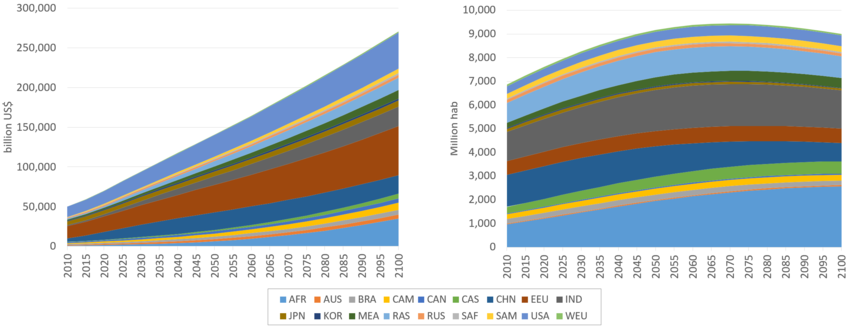Socio-economic drivers - COFFEE-TEA
Jump to navigation
Jump to search
Socio-economic drivers are exogenous to the TEA model. The model relies on the Shared Socioeconomic Pathways (SSPs) database as a reference for the economic growth and demographic scernarios. Most applications are based on the GDP and population projections of the SSP2 scenariodellink2017fricko2017 (<xr id="fig:TEA_fig1"></xr>).
<figure id="fig:TEA_fig1">
</figure>
| Corresponding documentation | |
|---|---|
| Previous versions | |
| Model information | |
| Model link | |
| Institution | COPPE/UFRJ (Cenergia), Brazil, http://www.cenergialab.coppe.ufrj.br/. |
| Solution concept | General equilibrium (closed economy) |
| Solution method | The COFFEE model is solved through Linear Programming (LP). The TEA model is formulated as a mixed complementary problem (MCP) and is solved through Mathematical Programming System for General Equilibrium -- MPSGE within GAMS using the PATH solver. |
| Anticipation | |
